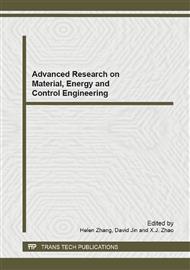p.73
p.78
p.83
p.88
p.92
p.96
p.100
p.104
p.108
The Performance Study of Light Foam Concrete
Abstract:
Ordinary Portland cement is gelling agent. Fly ash was used to replace part of the cement. Light foamed concrete joining physical foaming was produce. The effects of foam dosage on bending strength, compressive strength and coefficient of thermal conductivity of foam concrete were investigated. The results indicate that the increase of the amount of foam can greatly reduce the dry density of foam concrete. When foam dosage is 1.5 L/kg, we can produce light foamed concrete having certain intensity. Its dry density is 424 kg/m3, and heat conduction coefficient is 0.095 W/mk.
Info:
Periodical:
Pages:
92-95
Citation:
Online since:
January 2013
Authors:
Price:
Сopyright:
© 2013 Trans Tech Publications Ltd. All Rights Reserved
Share:
Citation:


